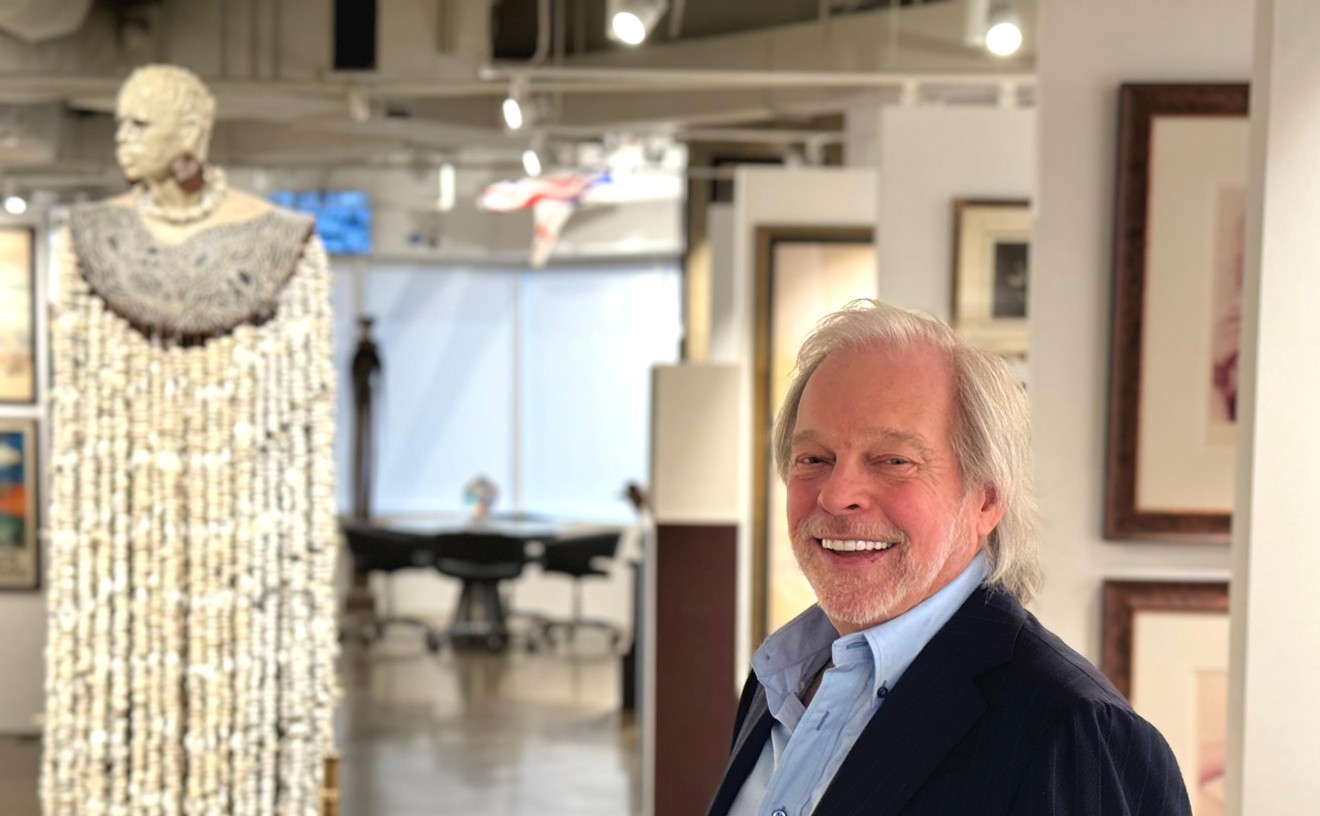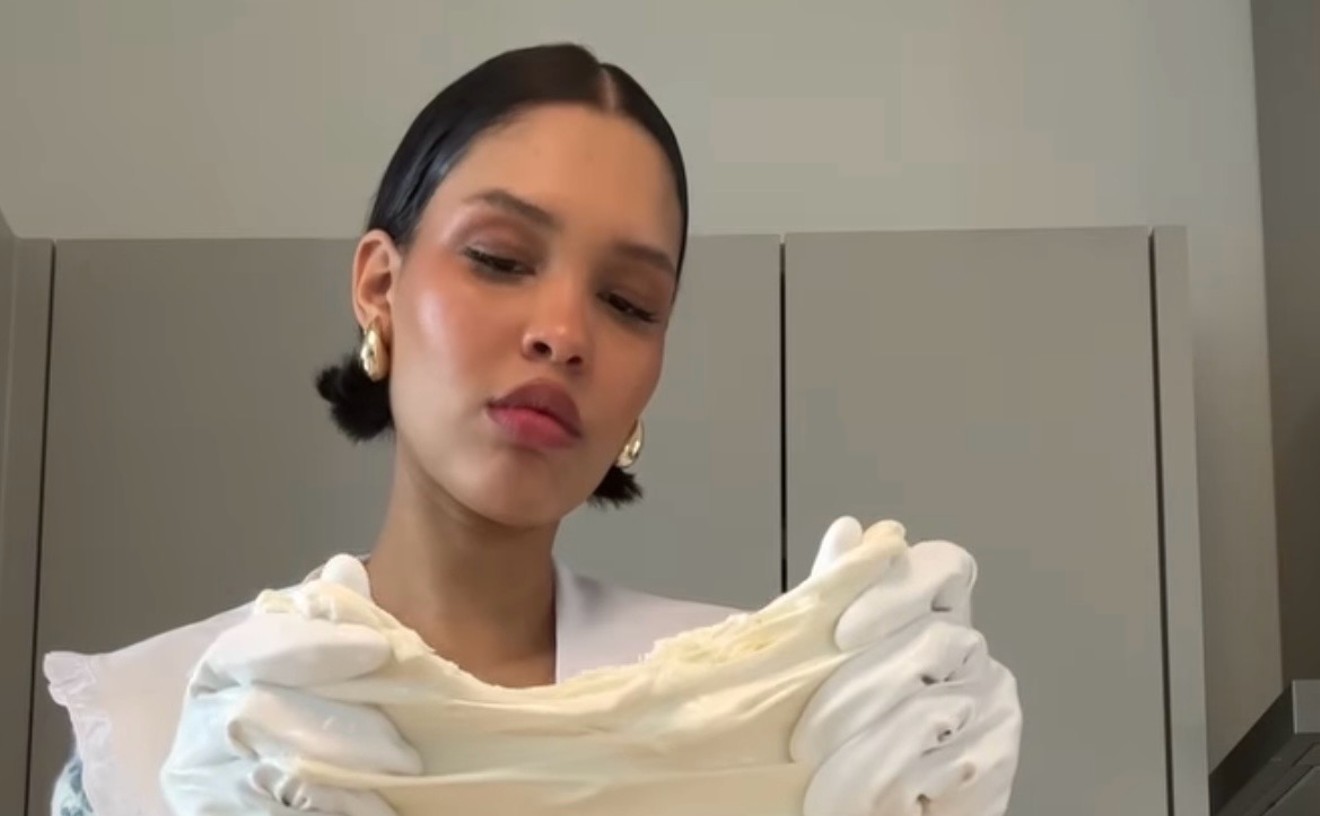The Latino Arts Project is Dallas’ latest effort to push Latino culture to the forefront of the conversation in a city with an ever-growing Hispanic population. Museum founder Jorge Baldor and executive director Carlos Gonzalez-Jaime look to change the Latino museum experience by making a space accessible to all, while building a platform to celebrate diversity in Latino arts.
“Latin America has a rich history of the arts from folk art to fine arts. ... We are interested in presenting Latino culture beyond the stereotypes,” says Gonzalez-Jaime. “We are always looking for excellence. We want everything to be perfect and aim to run Latino Arts Project with this philosophy.”
The museum director’s clear passion for the museum is contagious. He offers a plethora of information on the history of Latin American art and is even happy to give personal tours in both English and Spanish when needed.
The space seems more like a private art gallery than a museum. There are no objects displayed behind glass, no tape markers on the floors and no ominous security presence distracting viewers from connecting with the works. All of the museum’s staff are bilingual, adding extra accessibility to native Spanish speakers. Other helpful features in the museum include bilingual labeling, live interpretations with their ongoing lecture series titled “Art Voices Lecture Series” and several community education programs slated for the near future.
“The idea is not to lecture but instead focus on inquiry-based learning. We want to connect tangible experiences with relevance to today’s cultural climate,” says Shannon Trono, the museum’s education and communication programs coordinator.
The lecture series is scheduled for the third Thursday of every month and serves as a platform for scholars, critics and curators. The series aims to grow curiosity and to generate discourse about current affairs in the arts, within the local community and globally.
Baldor is a major proponent of education, social change and Latino advocacy. The Cuban-born businessman, world traveler and Southern Methodist University graduate founded several pivotal Latino projects in Dallas including The Latino Center for Leadership Development and Mercado369 in Oak Cliff. Baldor has also received numerous awards and recognition for his outstanding leadership in the Dallas Latino community. The new museum is his most recent contribution.
Running throughout summer 2019, LAP’s inaugural exhibition focuses on nine lesser known Mexican sculptors who helped define the new nationalism associated with the post-revolution era in Mexico. The movement was known as Escuela Mexicana de Escultura, or Mexican School of Sculpture. The collection's curator, María Estela Duarte, is one of the greatest authorities in Mexican sculpture. The exhibition is the culmination of 14 years of her efforts searching for the previously undiscovered pieces. Pulling uncatalogued pieces of artwork from obscurity took great effort, Duarte says, as she searched for the works through the artist's family members and private collectors alike.
“The families of all the artists located became a vital support in helping us construct the chronology of each artist, which doesn’t mean that the research on each concluded with this task," Duarte tells us in a Spanish email translated by the Observer. "The objective was to form a database on each one, as complete as possible given the lack of publication dates in general and particular bibliography.
"I gave myself the task of looking for the necessary orientation to reach the families of the sculptors I still didn’t know, which is how we came to locate pieces practically undiscovered, as in the case of Isaías Cervantes Rodríguez and Juan Leonardo Cordero.”
In many cases, post-revolution art focused on the theme of family and maternity in particular, while the new society looked to redefine their idea of nationalism. Cordero’s bronze sculpture, Maternídad (1937) is a great example of such a work and one of the strongest pieces in the exhibition. For the most part, this art movement worked in direct opposition to the nationalism that dominated the dictatorial regime of Porfirio Díaz before the revolution."The Latin people who live in the United States are stuck in a separate culture." — Curator María Estela Duarte
tweet this
“As the Mexican Revolution came to an end in 1920, the concept of a new nation was based in good measure on artistic propaganda," Duarte writes. "The subjects in this new order were: family, the worker, the farmer, education, maternity, hero worship, the history of a pre-Hispanic past, in such a way that both sculpture and other disciplines tackled the subjects of the towns in daily life, and the fight for equality and equity in an egalitarian society.”
Today, the fight for a truly egalitarian society is still as strong in Mexico as it was 100 years ago. Mexico has a strong and varied artistic and cultural history. LAP is Dallas’ newest platform for people to engage with these histories and come to their own terms about what it means to be Latino.
“Today there prevails a mix and idiosyncrasy that doesn’t correspond to reality. The Latin people who live in the United States are stuck in a separate culture generated by the States," Duarte writes. "This new open line created by the Latino Arts Project will give palpable models, bringing awareness, informing and re-educating the Latin community firsthand.”












